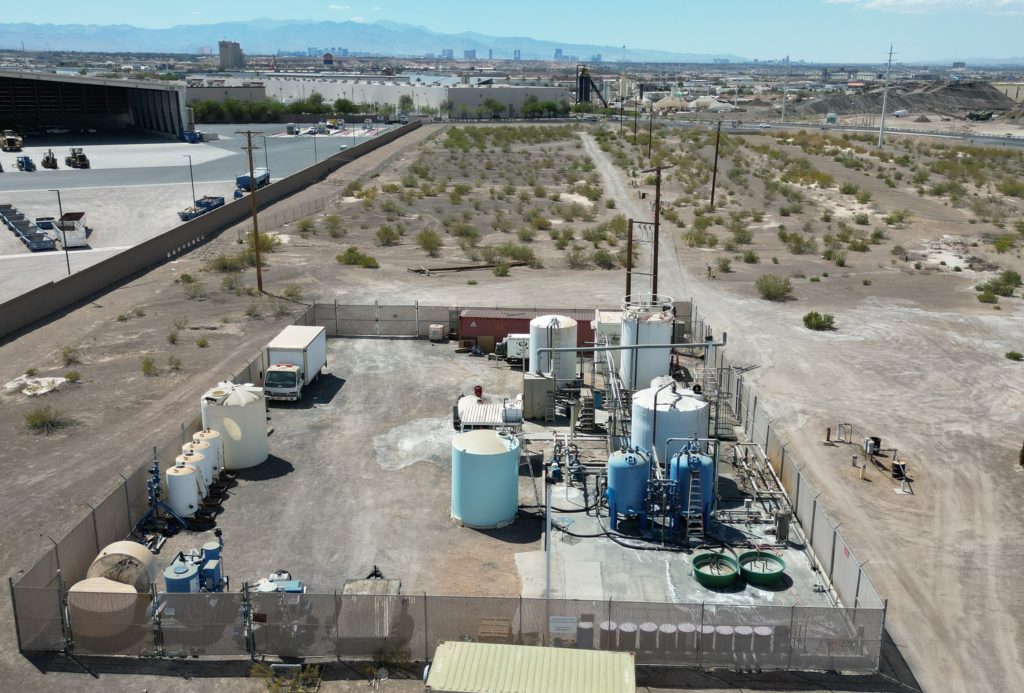You are the environmental manager of a property where your company’s past business practices have impacted groundwater quality. These impacts may have originated from leaking underground storage tanks, inadequately lined (or unlined) process or liquid waste storage ponds, drywells, or waste injection wells for example. Under regulatory agency oversight and approval, you have identified and are currently remediating the source of contamination. You have delineated the horizontal and vertical extent of the impacted groundwater plume on your property and have installed a pump and treat groundwater remediation system downgradient of the plume to abate impacts. Your remediation system has been operating routinely for a few years.
But what is the best approach to evaluate the efficacy of your remediation system? Demonstrating plume capture can be elusive. And a single capture assessment technique, or line of evidence, rarely produces a result that will conclusively determine whether plume capture is complete.
In this blog, I’ll explain why a multiple lines of evidence approach is the best way to confidently determine whether a remediation system is successfully capturing and remediating a plume of contaminated groundwater.
What Is a Multiple Lines of Evidence Approach?
A multiple lines of evidence approach consists of conducting several independent investigations to assess most any site environmental condition. It’s a common strategy for science-based decision making with applications for environmental remediation and risk assessment. In this case, it helps you confidently determine if the groundwater treatment system is effectively capturing and remediating the contaminate plume and preventing it from migrating onto adjacent properties. It’s also an accepted method for clearly and convincingly demonstrating capture to regulatory agencies, project stakeholders, and the public.
How Does a Multiple Lines of Evidence Approach Demonstrate Successful (or failing) Plume Treatment of a Groundwater Remediation System?
Actually, it’s very straightforward. Each assessment technique is subject to some limitation. A more complete approach would be to use several assessment techniques to evaluate capture. If the results of these multiple techniques indicate converging lines of evidence – i.e., that most or all the techniques produce the common result that the plume is being adequately captured and treated – this significantly increases the level of confidence in the conclusion.
Alternatively, if capture is determined to be incomplete, the data gaps and necessary changes or additions to the system will likely be identified during these assessments. These needed changes can then be addressed and future evaluations may demonstrate capture more conclusively. The use of multiple lines of evidence is typically well-received by regulatory agencies.
What Groundwater Assessment Procedures Should You Consider?
There are many assessment techniques that can be utilized to evaluate plume capture and treatment. Examples are provided in the U.S. Environmental Protection Agency’s (EPA’s) guidance documents entitled Elements for Effective Management of Operating Pump and Treat System (EPA 542-R-02-009, December 2002) and A Systematic Approach for Evaluation of Capture Zones at Pump and Treat Systems (U.S. EPA January 2008).
Common techniques include:
- Interpretation of groundwater flow lines from water level contour maps
These maps must be based on measured groundwater elevations from surveyed monitor wells, piezometers, or pumping and non-pumping extraction wells completed within the water-bearing zone of interest. Water level contour maps can be prepared using Surfer© software or other readily available data contouring software.
- Calculations or reasonable estimates of the contaminant capture zone width
The capture zone width created by the remediation system must be based on measured groundwater elevations, a systematic flow budget, and/or analytical groundwater flow models. A flow model package such as MODFLOW / MT3D or MODFLOW-SURFACT, MODPATH, or FEFLOW can be used for this purpose.
- Evaluation of inward flow relative to a flow boundary
This evaluation must also be based on measured groundwater elevations at a number of locations oriented perpendicular to any flow boundary. Inflow may be estimated as seen in the water level contour maps described above, by detailed analysis of groundwater elevation data along the flow boundary, or through modeling.
- Contaminant concentration trends
Contaminant concentration trends can be determined by analyzing routine groundwater sampling data from selected site monitor wells. The sampling data can also be presented visually by preparing simple time-concentration graphs. A variety of statistical applications (e.g., MAROS, Mann-Kendall Toolkit) are available that can be applied to the datasets to identify increasing, decreasing, or stable/no concentrations trends.Decreasing contaminant trends at various locations upgradient of a treatment system strongly suggest that source identification and remediation have been successful. Decreasing trends or low to non-detectable concentrations of contaminants downgradient of the treatment system suggest that the treatment system is effective at removing contaminants from the groundwater system.
Increasing trends are problematic. Typically, time-concentration graphs are prepared for transects of wells or at individual sentinel monitor wells located downgradient of the treatment system capture zone perpendicular to the direction of groundwater flow. However, these data can be useful anywhere on sites.
- Particle tracking
Groundwater particle tracking is most effective when used in conjunction with a numerical groundwater flow model calibrated and verified by actual groundwater elevations under pumping conditions. Simulations typically consist of releasing closely spaced particles started at locations upgradient of the treatment system. Particles that are influenced by the pumping extraction wells will move toward the wells indicating capture. Those particles that move beyond pumping wells are deemed to have bypassed the system indicating incomplete capture.KT3D-H2O is free software available to the public that can be used to simulate the groundwater surface and perform particle tracking. This software has gained regulatory acceptance at a number of sites. KT3D-H2O can be a cost-effective alternative to the modeling packages mentioned above.
- Implementation and analysis of data from tracer tests
Tracer tests are typically useful in evaluating the direction and velocity of groundwater flow along with other aquifer parameters.
Preparing for Regulatory Agency Review
Regulatory agencies will likely have specific requests for the evaluation of additional lines of evidence. These requests can be wide-ranging but may include:
- Demonstrating overlapping cones of depression in the pumping wells to confirm capture
Gaps between cones of depression may be an indication of incomplete capture resulting in impacted groundwater bypassing the treatment system. Also, to avoid the potential effects of well loss and overestimation of drawdown within the water-bearing unit of interest, it is important for this demonstration to be based on groundwater elevation data measured in piezometers installed near the pumping wells and not in the pumping wells themselves. - Three-point groundwater flow gradient solutions These solutions should use groundwater elevation data from non-pumping extraction wells, monitor wells, and piezometers located within the remediation system area. The gradients are used to assess the direction of groundwater movement either toward a pumping extraction well indicating capture, or away from a pumping well suggesting system bypass.
- Nested monitor wells to evaluate vertical gradients
Information from nested wells can be used to identify vertical flow gradients within the remediation system area and whether there is a potential for the groundwater plume to be flowing beneath the pumping extraction wells and bypassing the system. - Contaminant mass balance
The calculation of contaminant mass upgradient and downgradient of the treatment system is very useful in assessing capture efficiency. The mass of contamination upgradient of the treatment system is compared to the mass located downgradient. A significant reduction in mass is a strong indication that the treatment system is effective. Whereas little to no reduction in mass indicates that the contamination is bypassing the system. The capture efficiency of the remediation system can be determined by mass flux.
Case Study: Soil and Groundwater Investigation and Remediation at a Former Chemical Manufacturing Plant
In 1983, the State of Nevada entered into a Consent Order for the installation and operation of a Groundwater Treatment System (GWTS) to prevent groundwater contaminated with volatile organic compounds (VOCs) from migrating off-site of a former chemical manufacturing plant. Of primary concern is a plume of chlorobenzene and polychlorinated benzenes. A multiple lines of evidence approach was used to evaluate the GWTS capture that included the preparation of water level contour maps, particle tracking analyses, triangular irregular network (three-point problem) analyses, calculating contaminant mass balances, and evaluating groundwater VOC data from a transect of downgradient monitor wells.
The multiple lines of approach was successful in optimizing the GWTS. The results of the various investigations determined that capture was complete over a majority of the GWTS. However, two small areas of incomplete capture were identified and led to improvements to successfully address these areas. The GWTS continues to effectively remediate the VOC plume and address downgradient migration.
Read more about this Nevada State Superfund project.
Is the Multiple Lines of Evidence Approach Right for You?
When the conclusions from the majority of your individual investigations converge, that conclusion is more than likely valid. This gives you greater confidence that the conclusion is correct. This approach may also lead to identifying data gaps and deficiencies.
The use of multiple lines of evidence has increased over the years and is now looked upon very favorably by regulatory agencies in environmental investigations.
As always, it’s best to discuss the scope of this approach with your regulatory agency for their concurrence prior to initiation. This can be done in the form of a work plan or technical meeting. It’s likely it will be well-received by the agency since it will give them more confidence in the result – just as it will you.
If you’re ready to consider the multiple lines of evidence approach, the environmental consultants at Hargis + Associates can help.

About the Author
Brian R. Waggle, RG
Senior Hydrogeologist
Hargis + Associates, Inc.
bwaggle@hargis.com
LinkedIn: https://www.linkedin.com/in/brian-waggle-92390385/
Mr. Waggle is a Senior Hydrogeologist in H+A’s Mesa, Arizona office. He has over 30 years of professional experience in environmental consulting, specializing in soil, soil gas, and groundwater investigation and remediation.

